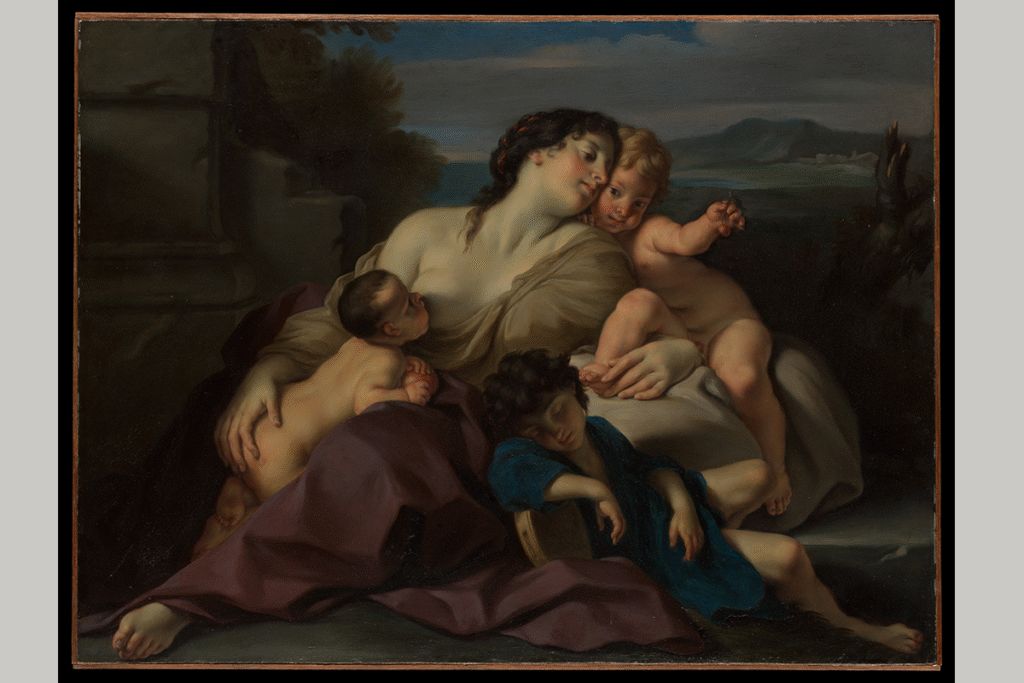Carlo Cignani, Charity, ca. 1680 Metropolitan Museum of Art, New York City
 What is love? Is it a feeling? A physiological reaction? What is love? This question has puzzled poets, philosophers, and artists for centuries. I was overwhelmed by this question while walking through the streets of Manhattan.
What is love? Is it a feeling? A physiological reaction? What is love? This question has puzzled poets, philosophers, and artists for centuries. I was overwhelmed by this question while walking through the streets of Manhattan.
Nevertheless, I found the answer at the European Paintings Gallery of the Metropolitan Museum of Art in New York City. In those magnificent hallways, there is a masterpiece that caught my attention. This marvelous feat was Charity, painted in the 17th century during the Baroque by the Italian Carlo Cignani. This masterpiece portrays the virtue of Charity through a personification of a woman surrounded by children: one feeds by her breast, one is napping, and the other is lovingly engaging with his mother.
When I first saw this painting, I was struck by the intimate setting of the scene. The masterpiece uses a triangular composition, catching the viewer’s eye toward the central figure of Charity and her sideways gaze. Also, the artist, using different colors and tones, light and shadow, creates a sense of tranquility.
Another detail I noticed is that the woman is pale, and her cheeks are rosy. All her body seems to be weak. Her children are draining every single drop of life and energy within her. Nevertheless, this woman is smiling. Why? Why is she smiling when she is perishing? Why is she so happy that her own children have drained her life? And then, I found the answer to my question. Love. She smiles because she loves them.
“Even while the feeding drains her body of its last strength, her cheeks are beginning to glow again with the same rosiness of life that appears on the cheeks of the boy who is feeding… By giving her all, completely, totally, without reservation, she is restored to a new life, new energy”(1).
Carlo Cignani painted different versions of the same theme; nonetheless, “this composition was very well received”(2), not only because of the masterful talents of the artist but also because of the theme itself. Human beings are created to love and be loved. Nevertheless, it is a matter of fact that most human beings do not know how to love. As a result, many people look for love in lies, pornography, prostitution, and toxic relationships that only empty their spirits more and more.
People are hungry for love. Therefore, as a legionary brother in formation, I would use this masterpiece as a clever example that love is not only a virtue but also a way of living. Love is not a mere chemical reaction within our body, but a most complicated and sophisticated science because the intellect does not understand what the heart seeks. Love is like this painting: beauty and sacrifice, light and shadow, joy and self-giving. “Love is patient, love is kind (…) It always protects, always trusts, always hopes, always perseveres”. (1 Corinthians 13, 4-7)
Foot Notes
- S. Auth, E. Auth, S. Aaron, Pilgrimage to the Museum: Man’s search for God through Art and Time, Sophia Institute Press, Manchester, New Hampshire, United States, 2022, p. 152.
- D. Rykney, The Met: Onze tableaux italiens du Seicento légués au Metropolitan Museum, January 15, 2021, in https://www.metmuseum.org/art/collection/search/816630, (Referenced on October 29, 2024)



